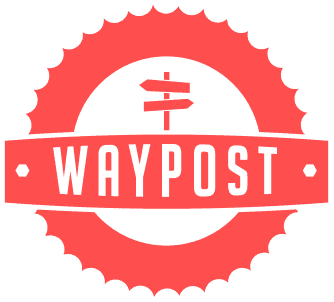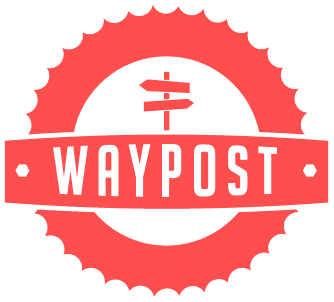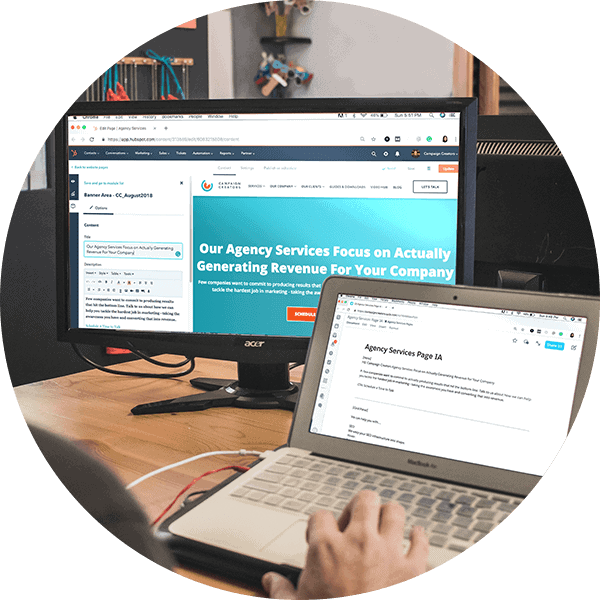
I Don’t Trust Digital Marketing Companies …
May 18, 2016
How Long Does It Take for Inbound Marketing to Work?
May 26, 2016
As you might have guessed, inbound marketing is our forte. That is why we love talking about buyer personas. We love researching them, creating them, using them throughout our marketing campaigns, we love telling others about them!
There is one simple truth behind our love for them; we always use buyer personas to execute a successful campaign … always.
If you don’t have buyer persona profiles for your business, then you’re most likely:
A) selling to anyone and everyone, which is a waste of resources.
B) executing non-targeted campaigns, which never reach your buyer.
or C) don’t know who you’re selling to … yes, that happens, too.
If you are new to the subject, take 5 minutes to review our presentation (see the link below this article), it covers everything you need to know about buyer personas. You’ll learn about ways that we are able to make use of our buyer personas in our marketing campaigns, giving you the tools you need to make use of them, too.
1. Website Design
A website that looks polished but doesn’t bring you leads or customers is a website that does not work. The exception to this rule, of course, is companies that are big on design and don’t rely on online marketing as a source for customers.
When website design starts at Waypost, we allocate a considerable amount of time to the planning phase. Jumping into wireframes and first drafts ends with a result that was never meant to convert. The first question we ask ourselves (and the client) is: Who is the website for?
Every persona responds to the same design details differently. The color of your homepage might attract one group, but distract another. Making use of buyer personas in this phase lets you avoid any further re-designs, which can be costly and set your marketing plans back by weeks. Ask your marketing team to carefully research your the buyer personas, as well as plan website navigation and conversion funnels before the actual design phase.
2. Website Navigation
Website navigation and user flow are closely related to your personas and your website’s performance. Hubspot informs us that incorporating buyer personas makes a website 2-5 times easier to use for targeted users.
So, questions we ask ourselves in this phase are:
- Do we know the browsing habits of our buyer personas?
- Are our buyer personas tech-savvy or do they prefer quick and helpful information?
- What do our buyer personas want to see the most on our website?
The list is endless. Answering these questions will help you see your website with the eyes of the visitor and assess its functionality better.
Imagine your customer is the kind of boss who always looks for the monthly report on the right side of his desk. If you want them to find that report fast, you know to always leave the report on the right side of his desk, right? Knowing that kind of regular behavior makes both your jobs easier. The same logic applies to your website and its visitors.
3. Conversion Funnels
Understanding the conversion funnels and how your visitors navigate into them is the key of understanding the behavior of your consumers.
Look back to your personas and find out what exactly they want and need (note that they might not know what they need just yet, but are eagerly searching for an answer). Once you know this, you can focus most of your content and marketing on specific funnels and increase productivity.
4. Keyword Research
While you can make changes to your keyword list as you go, it is important to have a fixed list of keywords you want to rank for from the beginning. Each keyword receives attention during your campaigns and is more and more tied to your website. So, please do yourself a favor and don’t change that list every 6 months (unless you got it really wrong).
How do you know what words and phrases will your visitors use to find you? If you know the basic demographic information about your buyer personas, you can get many linguistic peculiarities right. Are they above or below 30? Do they live in Ashville, SC or London in the UK? These details can make a difference in your keyword choices.
5. Search Optimization

It’s not just about keywords. You also need to optimize your online presence to be found in search (not only in search engines, by the way).
The searching habits of your buyer persona will tell you whether you need to focus your resources on organic search because they simply Google for help, or practice more social listening and social media marketing if they are looking for word-of-mouth. In other words, is your buyer persona on Google or Facebook? Do they spend 5 hours a day on Instagram? Wherever they are, that’s where you need to be, too.
6. Social Media Marketing
Your company doesn’t have to be represented on all social media networks. If you’re a B2B company specializing on business consulting, you can easily skip a more informal network like Pinterest or Instagram, instead focusing on a professionally-focused network like LinkedIn instead.
Same goes for trends and social media conent. Understanding what your buyer persona is interested in will help you deliver relevant information on your social media channels. Even the langauge you use can make a change in your reach.
7. Blogging
Blogging is the cornerstone of inbound Marketing. It’s one of the main ways you are found through organic search and also why your visitors keep coming back to your website. Knowing the challenges, goals, and interests of your buyer persona allows you to develop and publish information that will help them understand their problem, find solutions, and simply learn more about it. If you know what their biggest challenge is, you will know what content will be of value to them.
Curata confirms that the top 3 things that drive your content strategy and blog are buyer personas, audience demographics, and buying stage. That is why blogging is still important and why it works so well with B2B companies.
8. Exclusive Material
This step in our marketing campaign is similar to blogging but has a catch. When you’re developing educational material for an ebook, you have to know what your buyer persona is already aware of and what more would they like to learn. Asking them to fill out a form for information they already have or can easily find somewhere else is unlikely to be successful. If you want to win this first phase of conversion process, you’d better build it around your buyer personas.
Sounds like mind reading, doesn’t it?
9. PPC Advertising
Advertising has always been a little controversial. On one hand, you should not pay if you’re putting out great content that your target needs. On the other hand, advertising lets you cut the distance and deliver your content to your target much quicker when they search for it. Considering the latest changes Google made to its paid ad listings on the search results page, advertising can be very effective, provided you know who you’re targeting.
Why would you want to pay to show your ad to people who don’t need your service and are not your buyer persona? How about implementing a better targeting strategy based on your buyer persona research and target those you are looking for you and are more likely to become your customer?
10. Email Newsletters

When does your buyer persona check their email? It’s important to have a good idea of the answer to this question. Different kinds of people will check their email at different times, depending on their average schedule, workload, and other factors. Knowing this information lets you optimize your sending times, subject lines, visual elements and even the conent itself.
According to BrightTalk, “utilizing buyer personas in email campaigns glean 2x the open rate and 5x the click through rate.” If your email opt-in list consists of people that match your buyer personas, you can know for sure what subject line you need for them to give priority to your email, and not a dozen others they receive daily.
11. Lead Nurturing
Let’s say that you reached your goal and successfully collected 100 leads. Now what? Are you going to contact all of them, or only those who fit your buyer persona characteristics? In inbound, we start with leads that we know we can help and who need us. If a lead is not sure whether they need you just yet, give them time to do more research and make sure to make their search more effective.
Once you’ve determined which leads fit your buyer persona, go ahead and nurture your leads. Show them some attention and care!
12. Presentations or Proposals
If you’re doing it the inbound way, you need to personalize every presentation based on the needs of that specific opportunity. Tailoring the presentation according to the needs of the target means addressing the issues they care about. Now, how do you know what they care about?
Good question, right? Go back and read the buyer persona profile you’ve created. The answer lies somewhere in there.
13. Customer Service
If you’re a professional service company active in a specific community, be prepared to get questions not only on the phone, but also on social media and email. Sometimes people would much rather ask a question online than pick up the phone. Today’s consumers are actively researching their issue online and their question to you is a part of their research. Users also like the no-obligations feeling, as many are leery of phone conversations that turn into a sales pitch.
So when you get a question or request for tips on any of your online hubs, the first thing you should do is determine who are you talking to. It will help you develop your response with the right terminology and perspective. A CEO is different than an associate who was assigned to research an issue, reply to them differently.
14. Events and Offers
Events are a great way to announce your business, strengthen relationships with the community, and gain more business opportunities. How do you decide what kind of events or special offers your audience needs?
Every event or offer we produce, whether it’s a learning opportunity for our clients or an ebook-report on the latest trends, will attempt to tackle the issues our visitors or buyer personas have.
15. Our Entire Marketing Strategy
Finally, our entire marketing strategy is driven by our buyer personas. Every activity carried out at Waypost starts with them in mind. Considering all the benefits buyer personas give a marketer, isn’t it surprising that only 44% of B2B marketers actually use buyer personas (source: Hubspot)?
Hopefully this article helped you learn about this essential marketing detail, and we’d be happy to help you learn even more about the importance of buyer personas. Find out how to research, create and make use of buyer personas in our free presenation below.








